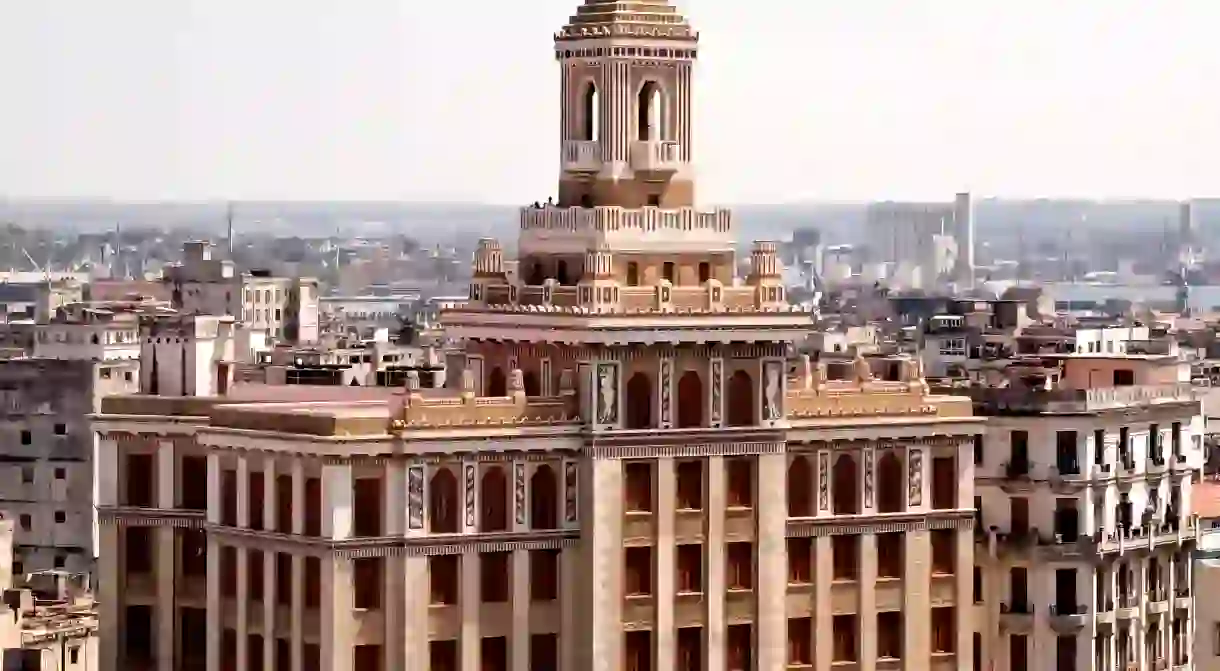An Introduction to Havana's Art Deco in 6 Buildings

Art Deco arrived in Cuba in the 1920s, when the local market flooded with American products and movies. Having achieved its independence from Spain some 20 years earlier, Cuba was eager to reinvent itself as a modern nation, and the industrial look of Deco was the perfect option to break with the colonial imagery. Although the influence did not go as far as introducing skyscrapers to Havana, a series of tall buildings went up in the ’30s and ’40s, in the rectilinear, symmetric style of Deco.
Bacardi Building
Building

Fausto Movie Theater
Movie Theater, Theater

America Theater
The America Theater still preserves some of the splendor that it radiated when it opened its doors to the public for the first time in 1941. The American influence is more visible here, in elements reminiscent of the Paramount Theater in Oakland, and the Rockefeller Center and its Radio City Music Hall. In addition to the theater, the building accommodates a housing bloc, a fast food restaurant, and a small store. The place is also famous for housing the Casa de la Musica de Centro Habana, one of the most popular night clubs among salsa dancers in Havana.

Lopez Serrano Building
A massive apartment building near the intersection of 13 and L streets, the Lopez Serrano is also heavily influenced by American Art Deco architecture. It was built between 1929 and 1932, raising fourteen floors into the sky (ten floors of the apartment block plus four floors of the tower). Although in bad shape at the moment, it is still possible to see the red Moroccan marble plating on the walls of the hall.

Casa de las Americas
Building, Concert Hall, Historical Landmark

Other minor buildings
Art Deco was very popular in Havana, and there are many other buildings that you’ll be able to discover if you look carefully. The list includes La Moderna Poesia bookstore at the end of Obispo street, the old building of El Pais newspaper and the Ultra department store, both in Reina Street, Centro Habana; plus the Maternidad Obrera Hospital in Marianao, just to name a few.














